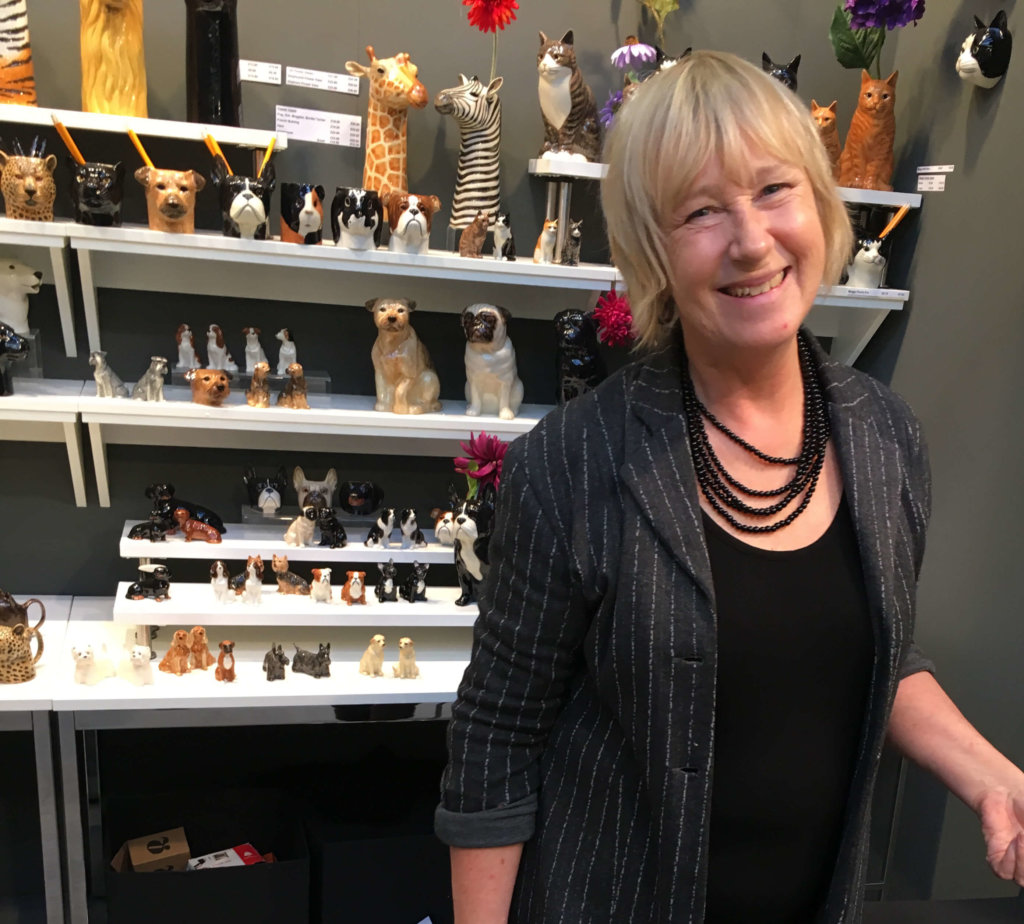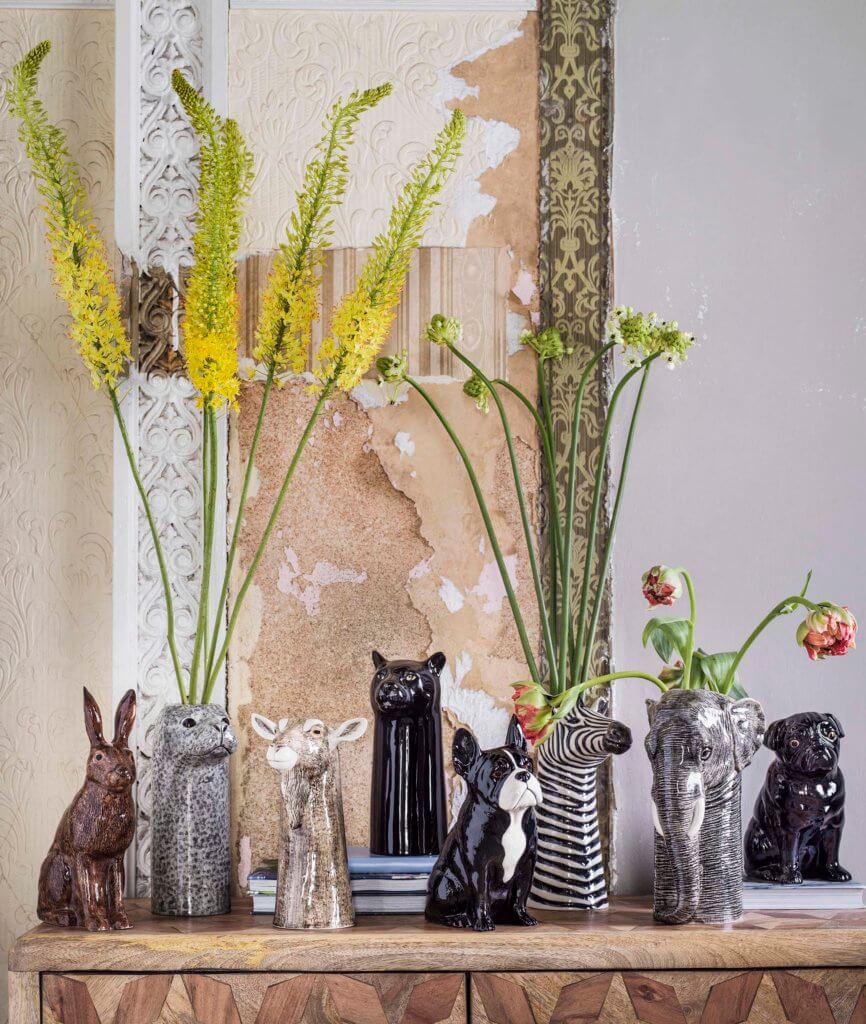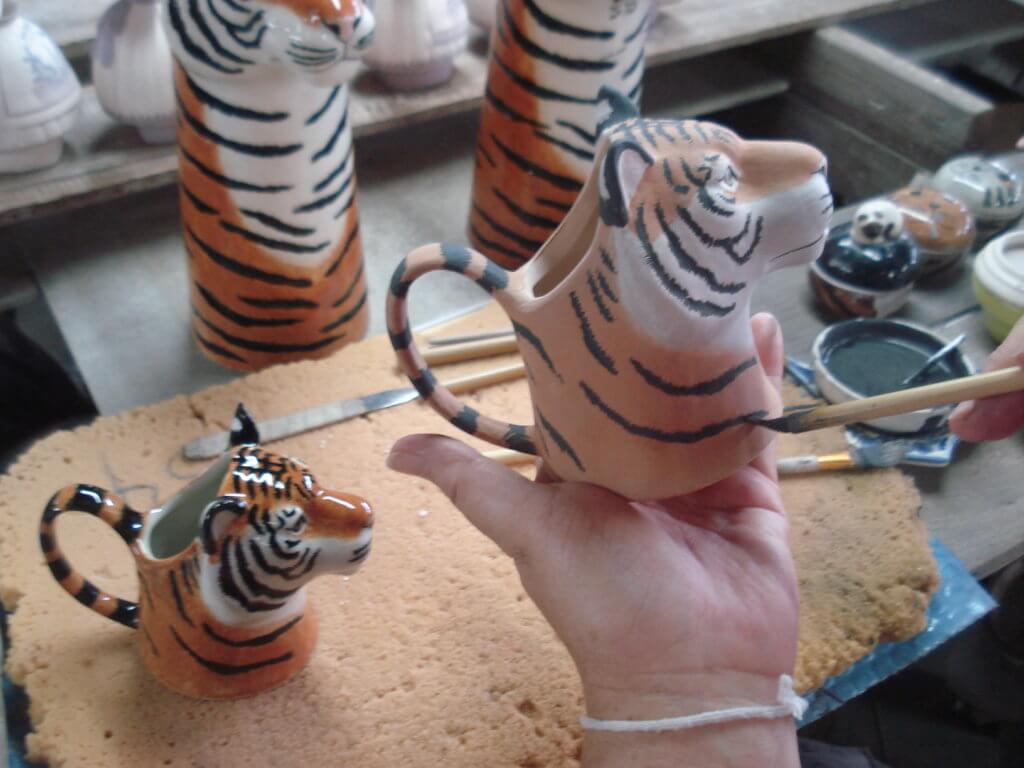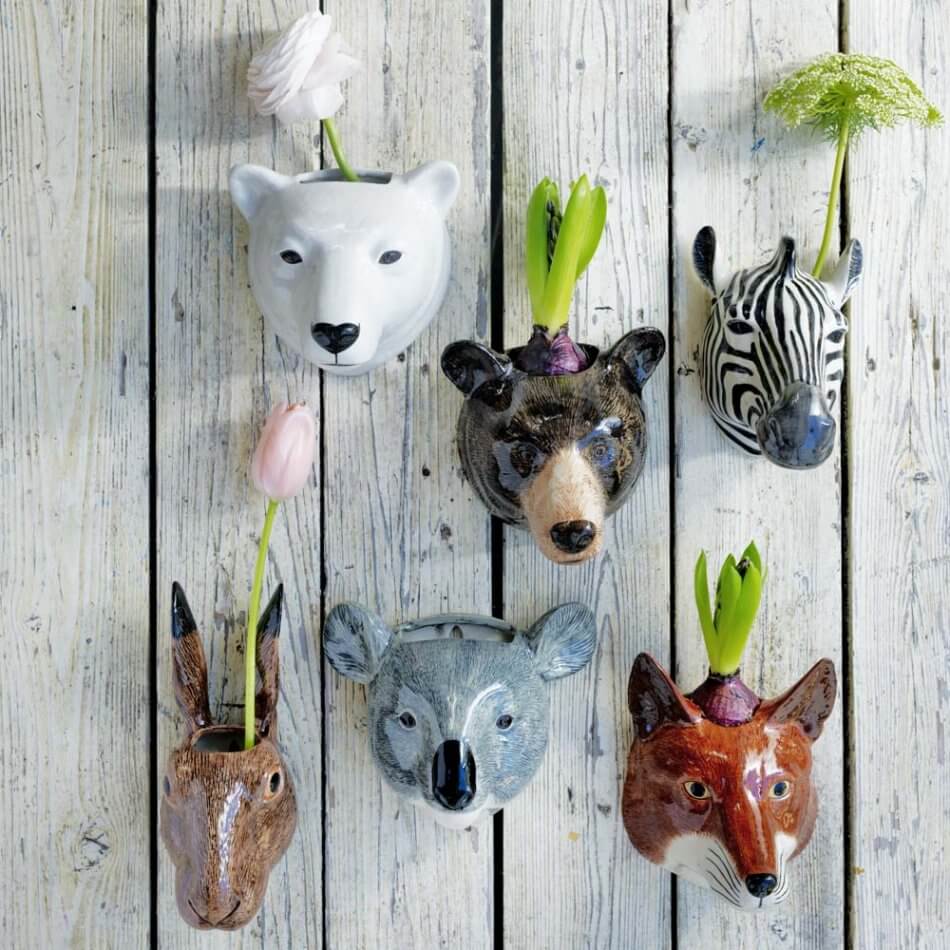Quail Ceramics are synonymous with their quirky and realistic portrayals of some of our favourite animals as ceramics. Founded by Debbie Beevor, a trained ceramicist, she started the company when working as a picture researcher for a well-known national magazine, falling in love with looks, colours and textures when exploring Southeast Asia.
She began importing textiles and carvings to sell in her spare time before moving into ceramics design and devoting herself full-time to the business. Over twenty years later and Quail ceramics are one of the UK’s leading designers and importer of hand-painted ceramic animal designs.
We spoke to Debbie about the company.
 Quail Ceramics founder Debbie
Quail Ceramics founder Debbie
What inspires your work?
The beauty of an animal, its look and feel. I love being able to translate some of that into a ceramic form that both touches the soul and provides people with something that is useful, quirky and gently amusing.
Is it a vase? Is it an animal? I may start by wanting to create a range of vases but the animal will have its way. I go to great trouble to ensure that small details are absolutely accurate, where they need to be; so for example you’ll notice that Quail tigers have a white mark behind the ears, it sort of looks like an eye from behind, perhaps it is camouflage but I make sure we get things like that right. That sort of accuracy and keeping up the quality on all of our products is inspirational, it makes you strive ever forward to make the next season’s offerings even better.
 Ceramic Animal Vases
Ceramic Animal Vases
Your work is famous for the quirky and distinctive animals you transform into vibrant ceramics, talk us through how each piece is made.
Each of our designs starts life as a sculpture in clay or sometimes Plasticine – it is a specialist and highly skilled business and we use a small team both in the UK and abroad who work closely with Debbie Beevor who is the designer and artistic director of Quail, with studios in Kent.
Over the years we have developed techniques that enhance the end product; for instance, the depth of indentations for spots in the coat of some animals will hold the colour when it is applied later in the process so they need to be made in a special way or the end result will be too heavy or not strong enough. Some designs can take up to a year until they are passed on to the next stage where a plaster positive is made and the working moulds are made from that.
Liquid clay is poured into the moulds by hand and left for the moisture to be absorbed until the emerging figure inside is the correct thickness. The residue is poured out and then the model gently removed, cleaned up with all the rough edges smoothed, air dried and then fired ready for painting.
All of Quail’s designs are hand painted. This is a skill in decline and one we are trying to preserve. The animals and birds are painted with underglaze colour using fine paintbrushes to obtain some of the delicate details. The design is then dipped in glaze and is fired for a second time to make the finished model in the characteristic shiny, ceramic look.
 A quail design being painted by hand
A quail design being painted by hand
 Ceramic Wall Vases
Ceramic Wall Vases
Do you have any new plans or exciting projects in the pipeline?
In a way scaling things down can be just as exciting as making them bigger. So taking a big wall vase and making it perfect for a few rose buds means you give smaller spaces the change to go totally Quail! I’ve been doing a lot of that sort of thing recently so for instance I hit the idea of miniaturising the wall vases so that suddenly there will be little heads full of toothbrushes springing up all over the country. Ideas can be adapted for studio flats, smaller rooms and the like. This smaller size means that I will bring in animals that suit a smaller scale such as hedgehogs and otters.
If you could travel anywhere in the world, where would you go?
I travel a lot all year but I like to get away to places that are lush, exotic and far away from the normal tourist tracks. I like to experience other cultures at a grass roots level and of course animals in natural environments.
Finally, what is the one thing you can’t live without?
I wish I could be that focused! Life is so full of challenges and excitements that I simply could not settle on one thing. I would hate to wake up in the morning and not be able to translate that slightly bizarre idea I have had into reality.
Find our range of amazing handpainted ceramics here and here.